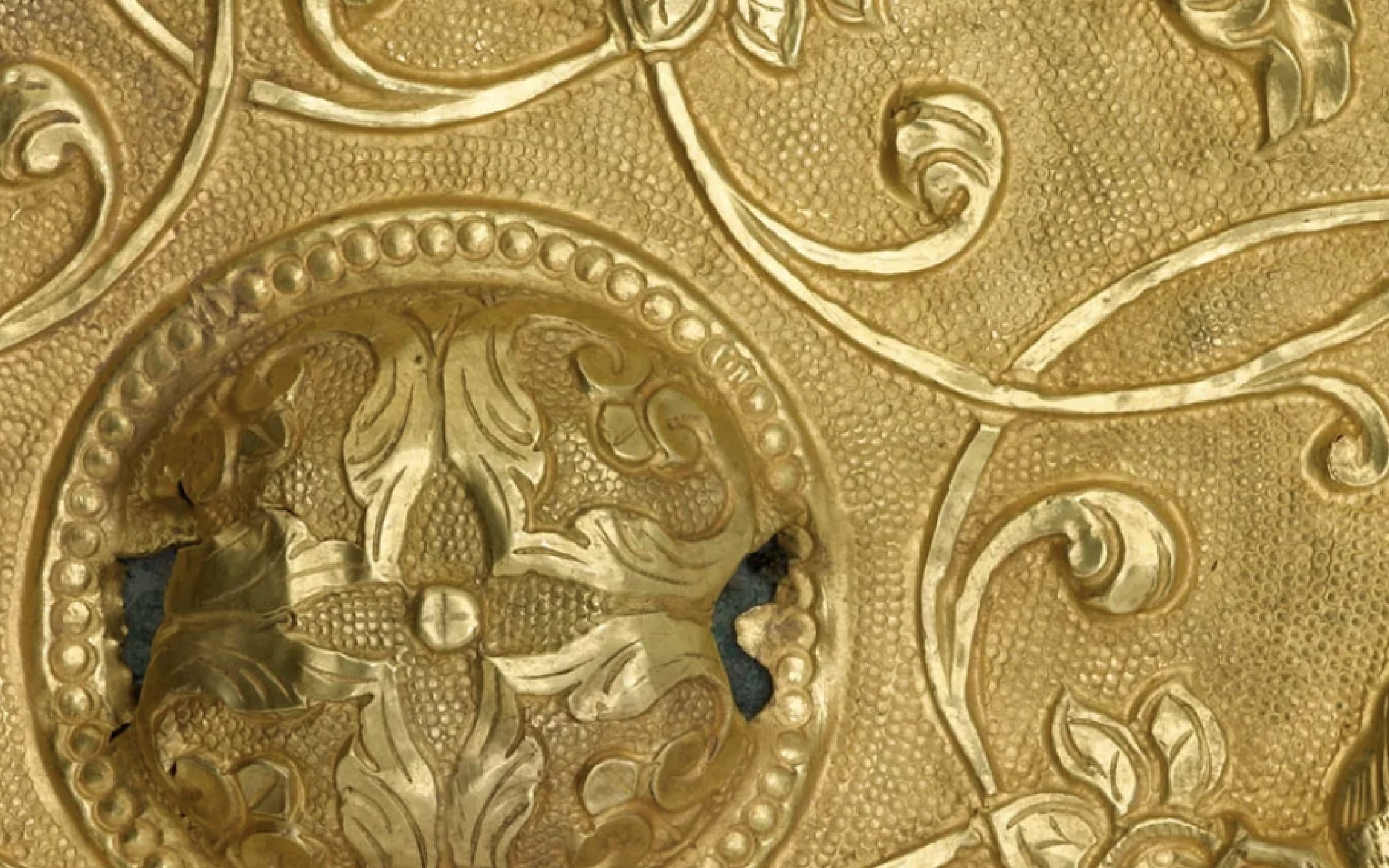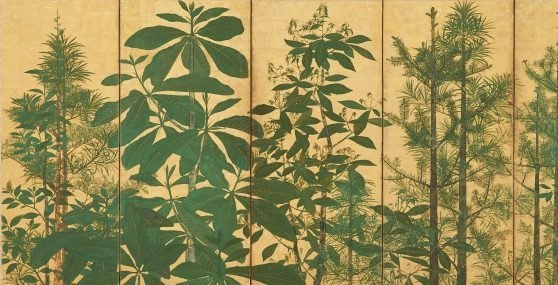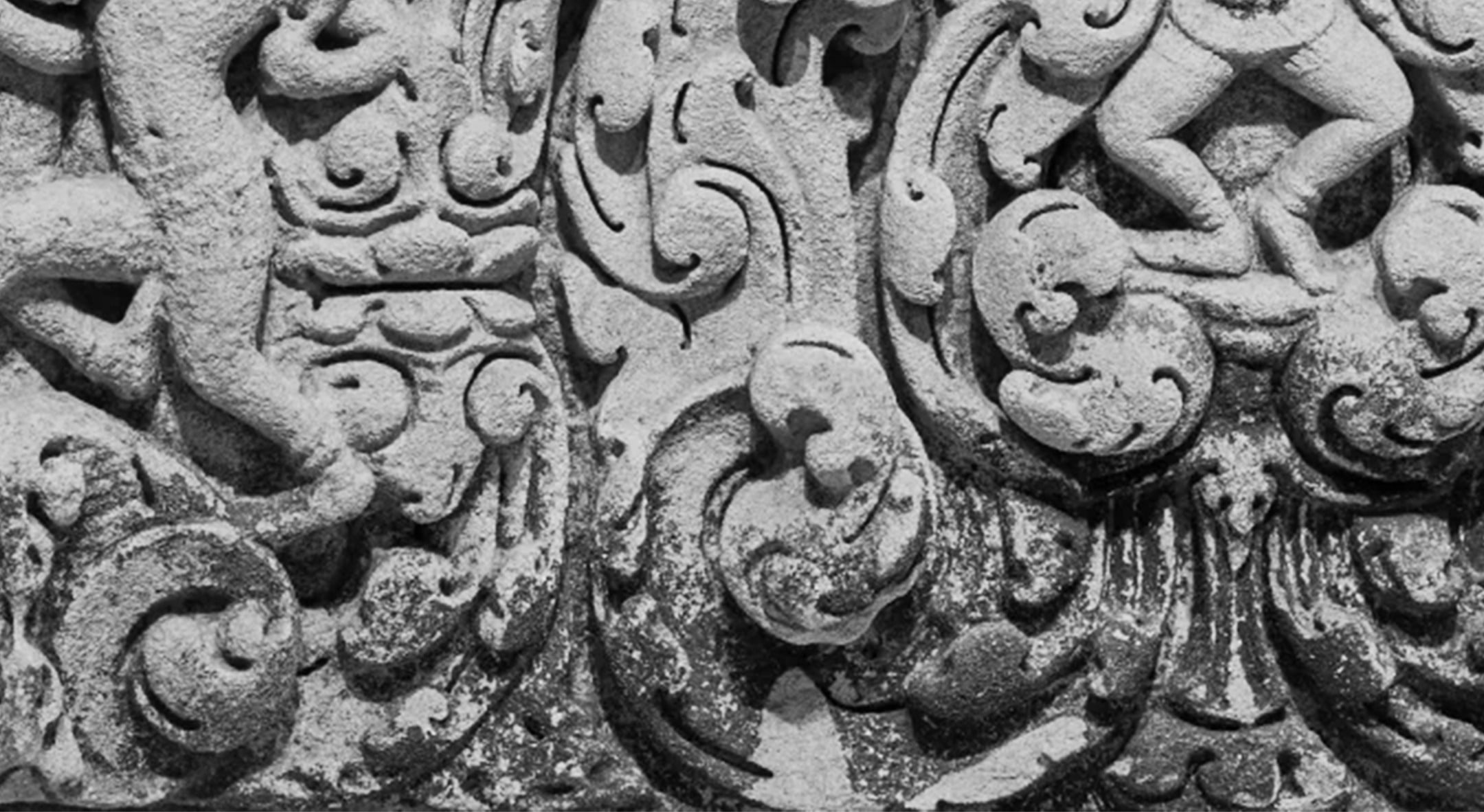October 26, 2024–ongoing
-
Dates
-
Location
Freer Gallery of Art | Galleries 5, 6, 6a, 7
-
Collection Area
Japanese Art
This exhibition highlights both iconic and lesser-known aspects of Japanese culture through paintings and ceramics from the Freer Gallery of Art Collection. Learn about Japanese art with a focus on the environment, notions of the body, historical crises, and new research findings.
Japan’s changing landscapes and local ecologies affected both imagery in paintings and how ceramics were made. Meanwhile, historic crises gave rise to art unique to Japan, such as stoneware repaired with gold (kintsugi) or visual retellings of national stories. Human bodies in art tell us about the emotions an artist wanted to express or the beauty standards of an era. Lastly, analysis of both broken and whole ceramics can give us new insights into how these works were designed, used, and valued.
The works in this exhibition come exclusively from the Freer Gallery of Art Collection, which houses Japanese paintings and ceramics from 3000 BCE to the twentieth century. Our museum’s founder, Charles Lang Freer, donated his collection to the nation in 1906 with the stipulation that the works not be loaned to other institutions or displayed among art from other collections. His gift established our museum and gave the public access to works from across Asia. Learn more about the National Museum of Asian Art’s history.
Video: Dressing Chigusa
This video shows two ways to dress the historic tea–leaf storage jar named Chigusa. Tea practitioners have used silk cords, covers, and pouches to dress Chigusa for tea gatherings for five centuries. The National Museum of Asian Art holds these adornments along with the storage boxes, wrapping papers and cloths, and documents that speak to Chigusa’s status as a cherished ceramic.
Credit line: National Museum of Asian Art, Smithsonian Institution, video by Staniski Media in cooperation with OMOTESENKE Fushin’an (「協力:表千家不審菴」)
Video | "Dressing Chigusa" | View on YouTube
Accessibility
Exhibition Text
You can find all the text from the exhibition’s walls and cases at the link below. There, you can resize the text or use a screen reader to listen.
Descriptive Transcripts
You can access two descriptive transcripts below. The first transcript is for the video shown in the galleries, which is longer and includes more detailed visual descriptions. The second transcript is for the video on this web page, which is shorter and includes briefer visual descriptions. Both videos describe the same two ways to dress the historic tea-leaf storage jar named Chigusa.
A man sits in profile in the formal Japanese kneeling posture, facing a rounded, brown-glazed ceramic jar known as Chigusa. The jar is large—it comes halfway up the man’s chest in height, from his sitting position. The man wears traditional Japanese clothing, including a dark blue top garment, gray striped bottom garment, and socks. A silk cord and a fabric cover sit to the man’s right on thewoven floor covering. A net bag of blue silk cords pools around the bottom of the jar.
0:07 – First, the silk mouth cover is placed on Chigusa.
Pleats shape the fabric cover so it fits neatly over the jar’s mouth. The fabric bears a swirling cloud pattern in a warm orange brown.
The man picks up and carefully unfolds an orange silk cord.
0:31 – A matching silk cord is tied around the mouth cover to secure it.
1:07 – The light blue net bag is pulled up from the bottom over the mouth cover.
The man carefully stretches the net bag so the cords are spread evenly across the jar and so the hands at the top align.
1:41 – The handles of the net bag are tied to secure it in place.
The man ties one knot, pulls up on the handles to further tighten the net bag, and ties a second knot.
2:16 – Chigusa is now fully dressed with its mouth cover and net bag.
The view shows the jar by itself on a white background, with the full dressing of the silk cover and net bag. The net crisscrosses evenly across the jar’s curved surface.
The view returns to the man kneeling by the jar, with the net bag and cover now removed. Instead of the short, orange silk cord and the net bag, a long, blue silk cord pools on the floor next to the man. The fabric mouth cover is the same, but it sits upside down, so its blue underside faces upward.
2:34 – Now, Chigusa is reset for a different dressing style. First, the silk mouth cover is placed on Chigusa.
The man gathers up the silk cord from the floor. He makes a circle at the center of the cord and lowers it over the silk cover.
2:54 – A thick silk cord is tied around the mouth cover to secure it.
3:11 – The excess cord is arranged into intersecting, ornamental loops.
The cords are thick, so they hold their shape when the man works them into loops.
3:43 – A total of six loops completes the first section.
The man gently rotates the jar to the left to start knotting the second section of decoration.
4:11 – Another thick silk cord is arranged into three intersecting loops.
4:20 – The ends of the silk cord are inserted into the holes of Chigusa’s lugs.
The lugs are knobs with holes that protrude from the sides of the jar, under the mouth.
4:28 – The excess cord is used to doubly trace the three intersecting loops and is tied to secure it in place.
The man rotates the jar to the right, to the blank part on the other side of the main six loops.
4:56 – The same steps are repeated with a third set of thick silk cordage.
5:33 – Chigusa is now fully dressed with its mouth cover and three sets of ornamental silk cords arranged into intersecting loops that cover the front and two flanking sides.
The view shows the jar by itself on a white background, with the full dressing of the silk cover and cords.
0:00 – Dressing Chigusa
A man looks down at a large, brown-glazed ceramic jar known as Chigusa sitting on a woven floor covering. From over his shoulder, we see him lift a fabric jar cover.
0:10 – First, the silk mouth cover is placed on Chigusa.
Pleats shape the fabric cover so it fits neatly over the jar’s mouth. The fabric bears a swirling cloud pattern in a warm orange brown.
0:25 – A matching silk cord is tied around the mouth cover to secure it.
0:41 – The light blue net bag is pulled up from the bottom over the mouth cover.
The man carefully stretches the net bag so the cords are spread evenly across the jar.
0:56 – The handles of the net bag are tied to secure it in place.
1:10 – Chigusa is now fully dressed with its mouth cover and net bag.
The view fades out. When it fades back in, the net bag and cover are now removed from the jar.
1:22 – Now, Chigusa is reset for a different dressing style. First, the silk mouth cover is placed on Chigusa.
The man unfolds a long, blue silk cord.
1:34 – A thick silk cord is tied around the mouth cover to secure it.
The man makes a circle at the center of the cord and lowers it over the silk cover.
1:47 – The excess cord is arranged into intersecting, ornamental loops.
1:59 – A total of six loops completes the first section.
The man makes a new set of loops from another blue cord in his lap.
2:12 – Another thick silk cord is arranged into three intersecting loops.
2:19 – The ends of the silk cord are inserted into the holes of Chigusa’s lugs.
The lugs are knobs with holes that protrude from the sides of the jar, under the mouth.
2:27 – The excess cord is used to doubly trace the three intersecting loops and is tied to secure it in place.
The man carefully rotates the jar.
2:40 – After adding a second set of three intersecting loops, Chigusa is now fully dressed.
2:47 – The mouth cover adorns the top. Three sets of ornamental silk cords cover the front and two flanking sides.
Two versions of the jar appear on a white background with the two different sets of dressing demonstrated so far. The left version wears the net bag, while the right wears the loops of silk cord.
Video: Ink Painting
Japan has a long tradition of ink painting, a unique art form that originated in China. Watch this video to learn how an ink painting comes together. This animation digitally captures the movements of a contemporary ink painter who recreated the sixteenth-century Japanese painting Image of Jurojin (F2015.6a-d) by Sesson Shukei 雪村周継.
Video | "How does an ink painting come together?" | View on YouTube
Keep Exploring: Art Stories
Gold
Surround yourself with all that glitters, from objects that lure the eye with their impressive mass and exquisite workmanship to subtler glimmers of light and luxury through the addition of a sheer gold leaf, fine gold wire, or a dusting of gold powder. Learn why gold has captivated us for millennia, and find out all the ways it was incorporated into objects across the museum’s collections.
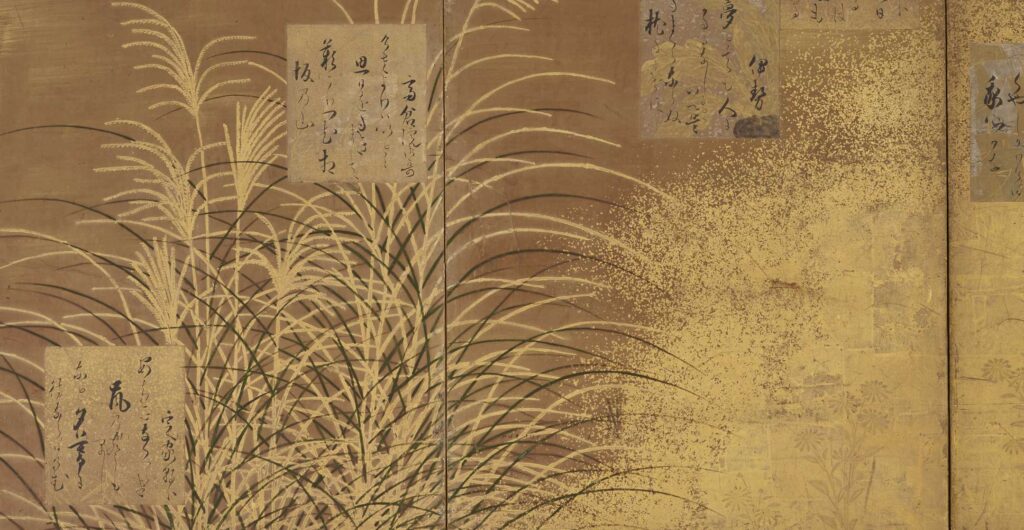
Art and the Environment
While it may not be the first thing we think of when looking at a work of art, environmental factors have shaped everything about it, from how it was made, to how it has been perceived and appreciated, to how it has been preserved for today’s audiences. Dive into the complex and interconnected relationships between art and the environment—from images of the natural world to recycling ancient jades—to see our collections in a whole new way.
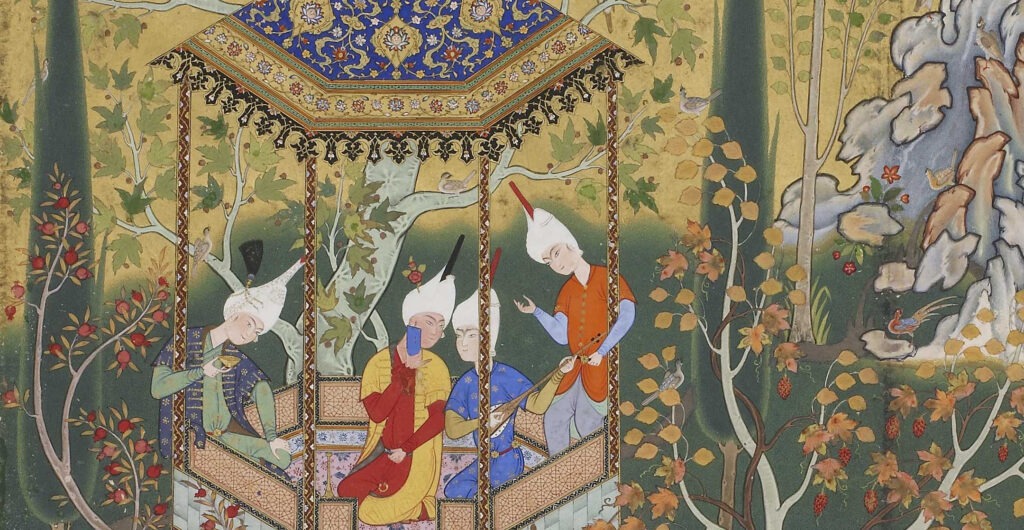
Support
Generous support for this exhibition and the museum’s Japanese art program is provided by
Related Exhibitions
-

Knotted Clay: Raku Ceramics and Tea
December 9, 2023–2026
-

Striking Objects: Contemporary Japanese Metalwork
March 2, 2024–January 11, 2026
-
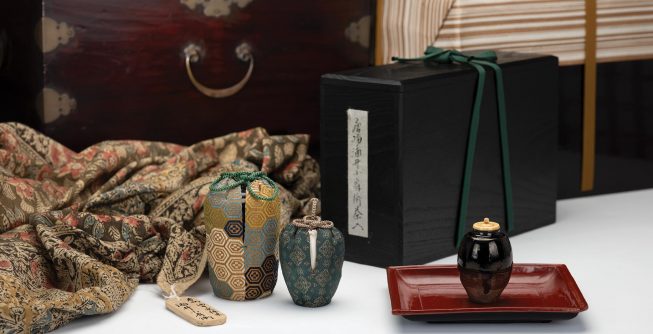
Reasons to Gather: Japanese Tea Practice Unwrapped
April 12, 2025–April 26, 2026
Trees, Inen seal (1600–1630), Japan, Edo period, mid-17th century, ink, color, and gold on paper, National Museum of Asian Art, Smithsonian Institution, Freer Collection, Purchase—Charles Lang Freer Endowment, F1962.30
- Jump To...

